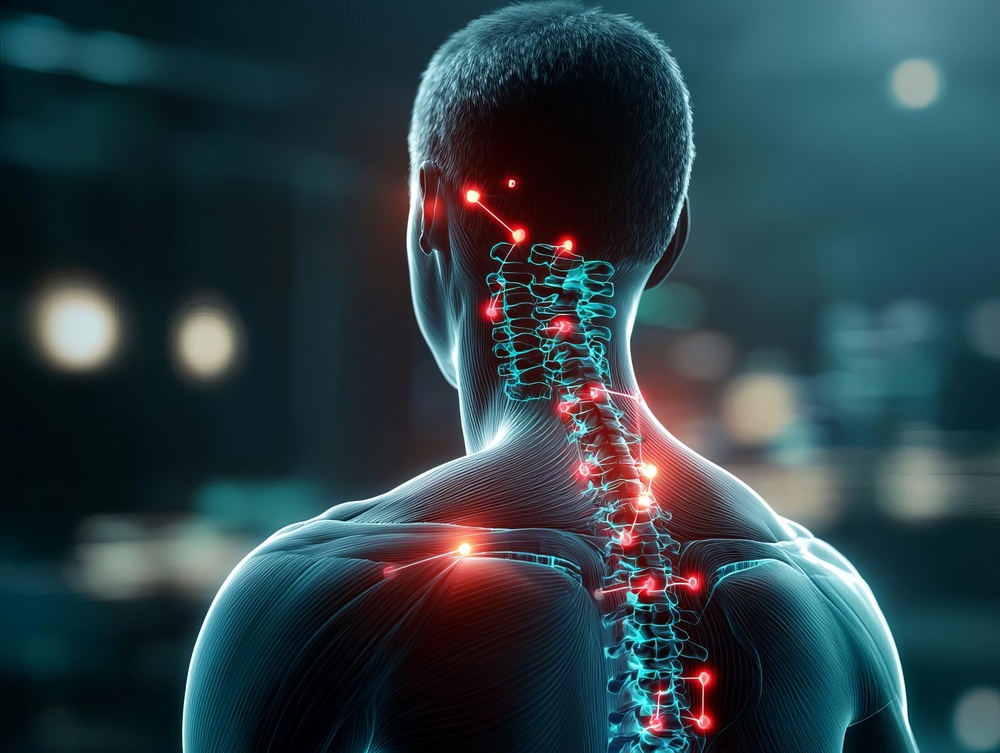
21 Aug How Much Do You Know About Trigger Points and Associated Pain
Trigger points are a curious thing. They can be the source of pain throughout the body. They are also something that doesn’t get talked about a lot in the realm of pain management. That’s unfortunate because learning to identify and treat trigger points can go a long way toward alleviating certain types of pain.
How much do you know about trigger points? Have you heard of trigger point injections? Don’t feel bad if you know nothing about either topic. You’re not alone. Better yet, this post will explain the basics of trigger points. Read to the end and you should have a pretty good grasp of the topic.
Hyperirritable Muscle Tissue
Trigger points are discrete, hyperirritable portions of muscle tissue. They are found mostly in the deep, taut bands of skeletal muscle. They are so named because even the slightest touch can trigger significant pain. The interesting thing is that trigger points can create both local and referred pain. Some people experience muscle twitching with their trigger points.
Medical science classifies trigger points under four categories:
Active – An active trigger point produces pain spontaneously. It doesn’t necessarily have to be touched or manipulated. Active trigger points tend to cause referred pain.
Latent – A latent trigger point does not trigger pain spontaneously. It is only painful when touched or compressed. Latent trigger points are more likely to produce local pain.
Primary – Primary trigger points are independent bands of taut muscle tissue. They are not linked to any others.
Secondary – Secondary trigger points develop in response to their primary counterparts. Wherever there is a secondary trigger point, there is also a primary nearby.
Trigger point pain is usually diagnosed after a thorough physical examination that includes manipulation. Clinicians don’t need x-rays, MRIs, or other tests to make a diagnosis. Fortunately, manipulation works well enough at the hands of a skilled clinician to identify taut muscle bands. Compressing those bands will cause pain, confirming the diagnosis.
Trigger Point Causes
One of the main causes of trigger points is muscle injury. An injury could be due to repetitive motion or acute trauma. Other causes include poor posture, a lack of exercise, excessive muscle tension, and even nutritional and sleep deficiencies.
Trigger point symptoms include:
- Muscle pain and tenderness.
- Local muscle twitching.
- Referred pain (predictable).
- Decreased range of motion.
- Muscle weakness.
Expressing these symptoms to a doctor could lead them to suspect a trigger point issue. Diagnosis would be confirmed with the previously described physical exam and manipulation. Once trigger points are identified, doctors have a number of options for treating them.
Different Treatment Approaches
As with just about everything in medicine, there are different treatment approaches for trigger point pain. Some doctors prefer to start with manipulation therapies including massage and muscle stretches. Other therapy options include:
- Trigger point injections.
- Heat therapy.
- Ultrasound therapy.
- Physical modifications.
The physical modifications portion of treatment refers to changing things within the patient’s physical environment, things that could be contributing to the pain. Office ergonomics is a good example. It might be possible for a patient to change the way she works at the computer for a more ergonomic experience. Make the office more ergonomic and her pain might be alleviated.
Lone Star Pain Medicine offers trigger point injections along with other treatments for trigger point pain. If you’re experiencing pain that you believe may be related to trigger points, we invite you to pay us a visit. The team at our Weatherford, TX office can’t wait to meet you and help you get started on your journey toward feeling better.


No Comments